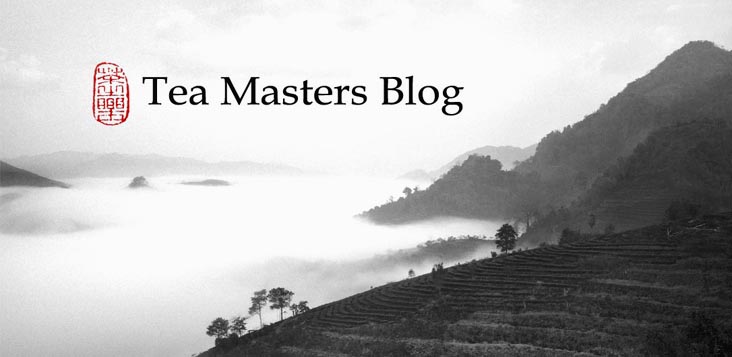NYC is a city where men have created mountains of glass and steel. Even coming from a big city like Taipei with its 101 bamboo shaped building, it's hard not to be fascinated by New York's skyline.
This is especially the case at night or in the early hours of a sunny morning! I wonder if these buildings have inspired the name of the Floating Mountain Tea House. In any case, I find this an excellent tea house name in this city! And that's one reason why I was eager to meet with Scott Norton there.(I'm sorry if I didn't contact all my blog readers in the NYC area. These trips always receive a very late approval and it's difficult to plan many or large events. That's why it made sense to meet someone who is very dedicated to tea education and share some of my techniques so that he can pass it onward to a large number of people.)
So, I brought my little gold coated silver teapot and I let Scott play with it! He's a fast learner and poured with calm and dexterity.
We tasted three very different teas. A green tea from the tea house, a lapsang souchong and my early 1990s green mark. All three felt particularly pure and light brewed in the silver teapot.
It's as if the teas were under a microscope: all their scents were intensified. We also experimented with different cups to see how they affect taste and color. The ivory hue went really well with the red tea and the aged sheng puerh.
I still feel that the best place to brew tea is at home where I have all my teas and accessories (or in nature), but such a tea house is a really nice place to have tea with a friend when the home is not an option. And it's also the opportunity to meet other tea drinkers at events hosted by the tea house and where Scott is the instructor. If you're new to the tea scene, I think it's a great way to learn.
I wish Scott and the Floating Mountain tea house success in spreading traditional tea culture in NYC. It's not an easy task in a city where the water quality is more suited to brew coffee than fine teas!
But when the air is clear and the sky is blue, it feels we're walking among mountains of glass and steel! That's when I feel almost electrified by the energy of city! It's a similar feeling to a sunrise in Alishan or Lishan.
 |
| Bryant Park |
 |
| Central Park |

































